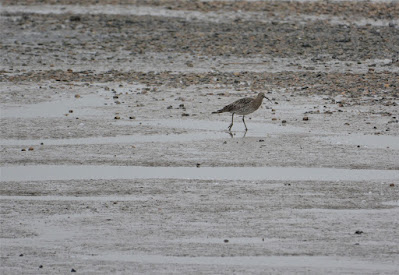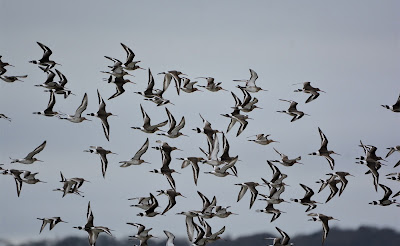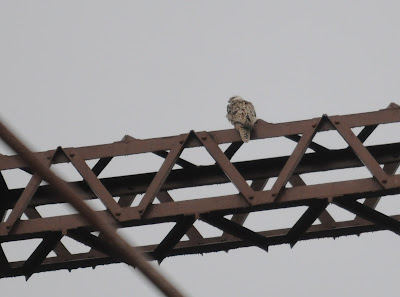I at last added Raven to the Site list after a good few years of missing passing birds, initially a pair on site on one of the Pylons seen by Danny, I eventually caught up with one of them on February 9th. A much-needed tick for the site, Osprey is yet another long overdue, however good to catch up with the big Corvid and great to see them edging into London. From what I understand the pair of Ravens were inspecting one of the larger pylons for possible nest sites.
It brings my site list up to 153 species so not too bad for a little urban site.
The Kestrels are looking good again for breeding in the nest box, the female has started the pre breeding strong connection to it, also the pair of Common Buzzards are present and as ever, very hard to get close to, even in a car.
Black Tailed Godwit numbers have been high after Christmas and into February, usual numbers in this time frame here are fairly low, pre-Christmas being higher numbers. On February 9th I recorded a flock of 203 and on Saturday Feb 18th a flock of 108 were present. Saturday’s flock also contained 2 colour ringed birds so will be good to see where they are from.
2 Curlew are regular as are Redshank, at high tide when the river pushes the waders off the mud, the Redshank roost locally on the Jetty/Riverfront, but the Curlew/Black Tailed Godwit all head back down river to roost.
Oystercatchers have arrived back for the breeding season, I saw one on February 9th, each year they seem to come back earlier, it used to be March regularly for a number of years, so would presume the effects of global warming and milder winters kicking in possibly.
Curlew
Black Tailed Godwit
Rock Pipit
Gabion Wall - Redshank Roost
Summer plumed Black Tailed Godwit
Even on one leg still ok
Kestrel and Carrion Crow
153 for the site - Raven
March brings early migrants so will search the skies again for a passing Osprey, others have recorded them going over locally, it’s just a matter of time……




















.JPG)

.JPG)


.JPG)




.JPG)

.JPG)

.JPG)
.JPG)
.JPG)

.JPG)
.JPG)



.JPG)
.JPG)
.JPG)
.JPG)
.JPG)
.JPG)
.JPG)